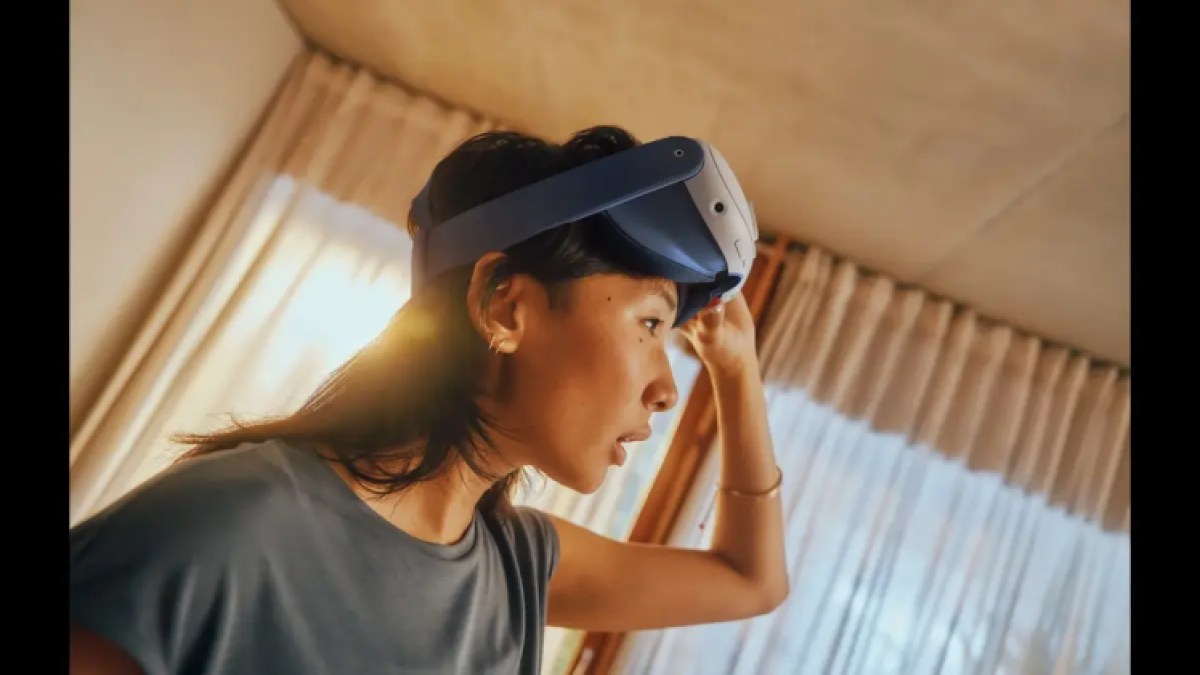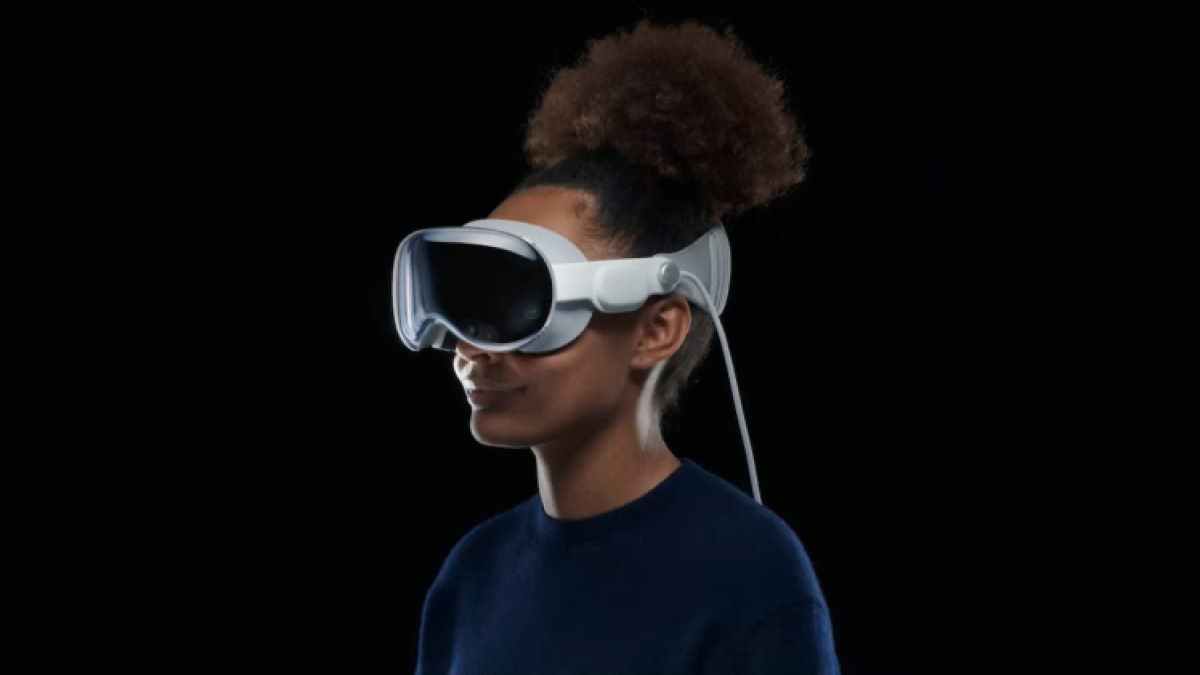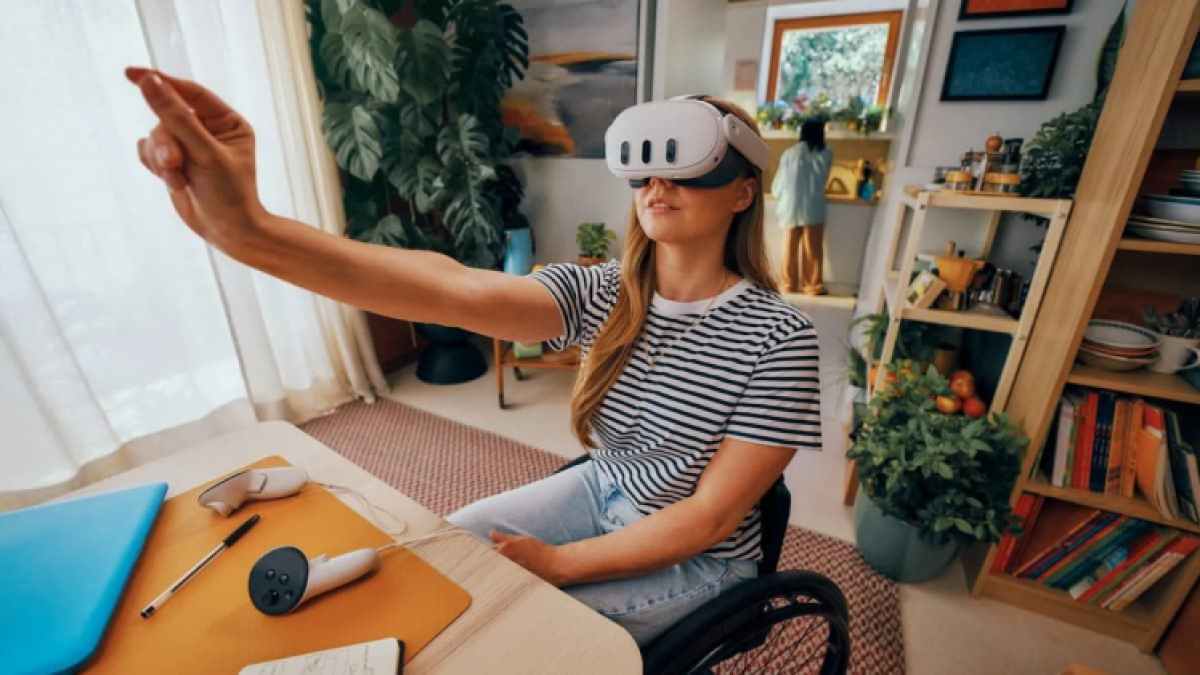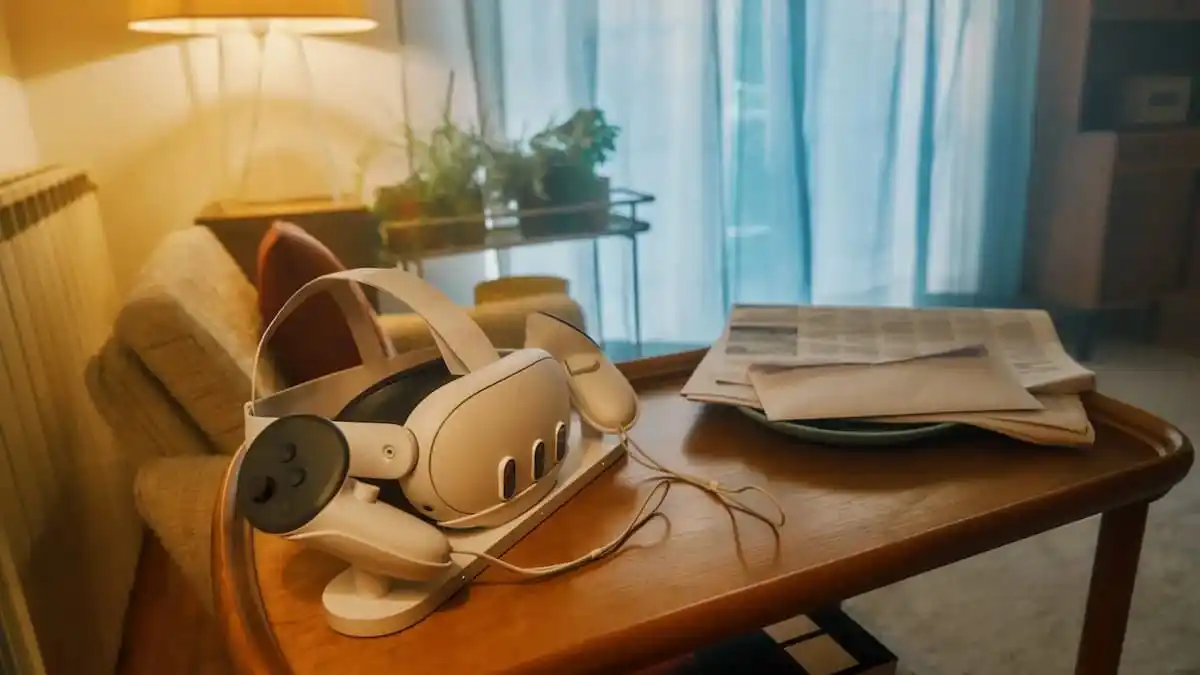Apple has finally stuck its oar into the VR Headset (Sorry, Spatial Computing) market with the Apple Vision Pro, giving Meta Quest 3 a run for its money. However, the typically monstrous price tag may promise more than it delivers. When weighing up your options for VR with augmented reality, the facts need to be laid down.
The Basics
The basics of both headsets get them off to vastly different starts. The much more expensive Apple Vision Pro sits at an enormous $3,500, while the much cheaper Meta Quest 3 only costs between $499 and $650. The obscene cost of the Apple product is one I expected to see. Apple often likes to massively inflate its price to give the illusion of superiority in the market. A type of Emperor’s New Clothes situation. The exorbitant costs often make people think they are buying something of much higher quality, full of innovation. This is rarely the case.

When it comes down to weight, the Meta Quest 3 takes the prize again, weighing in at a full 136G less than the 650G Apple Vision Pro. There are good reasons for this, though, including build quality and materials. Lighter isn’t necessarily better, as we will come to see. However, if you’re planning on strapping on a VR headset for a full day, less is best.
Aesthetics
I have never been a fan of white technology. I feel it looks cheap and often becomes grey and dirty with use. Aesthetically, for me, the sleek, black look of the Apple Vision Pro is so much nicer. However, Aesthetics are more than just appearance.
Build Quality
The Meta Quest 3 is built from plastics, albeit sturdy plastics. This is in contrast to the much nicer-looking glass and aluminum build of the Apple Vision Pro. The Meta Quest 3 opted for the lighter, plastic build, presumably for comfort and weight reduction. This choice no doubt makes for a much more comfortable wearing experience, but it loses out on quality.
With the Apple Vision Pro, the high-quality aluminum and glass casing is typical of Apple’s typically clean design choices. It also screams 3.5K on your face, but that’s all part of buying into the Apple brand. These better-quality materials do add a lot of weight to the VR headset, though, making extended periods of use much less comfortable.
Accessories
As with all Apple products, there are a myriad of accessories that can be purchased. However, they can only be from Apple and will always cost a fortune. The Meta Quest is already in its third generation, and so the market is already saturated with all sorts of innovative and inexpensive third-party options to buy.
If you need a new head strap, interchangeable face pads, or improved cabling, there is a cheap third-party option out there for the Meta Quest 3 VR headset. With the Apple Vision Pro, if you want to change things up, you’re going to have to buy it from the limited Apple range.

When it comes to the joysticks, Meta Quest 3 has made some vast improvements, implementing an F1-style halo around the hand to protect and track. The Meta Quest 3 can also be used without them, implementing not-so-reliable hand tracking.
Apple has done away with the controllers completely, instead relying on hand tracking. This is a fantastically functional alternative on the whole. However, the use of a virtual keyboard is never going to be the same. Thankfully, you can just purchase a physical one from Apple or use your Mac… for whatever fortune that costs.
Battery
Having a face-mounted augmented reality office strapped to your eyeballs is all well and good, but if it lasts shorter than a feature-length film, then what’s the use? Battery life on these highly demanding headsets is still an issue for true, wireless VR experiences, and one of them certainly outstrips the other.
The Meta Quest 3 has been out for some time now, and people have had the chance to stress test it. Sadly, the battery life just does not live up to expectations. It has been reported that playing games and watching films can run the battery down in about two hours, whereas locking into AR drains it in 90 minutes. Looking through forums and posts tells me that the advertised time isn’t quite right either. Some Meta Quest 3 users are wearing their batteries out in 15 minutes.

Apple has only had their Vision Pro out for a matter of days at the time of writing, but their battery situation seems to be a lot more in control. The interesting choice to have the battery pack sitting in a pocket externally has paid off. Although the Apple Vision Pro only has around two to four hours of battery life, the battery can be charged on the go. In theory, you could daisy chain more battery packs to the original rather than sitting and plugging in.
Plug in
Both headsets have the option to be able to simply plug into a power source to continue use. Even though the Meta Quest 3 comes with a fast charge plug, it still pretty much charges at the speed it drains. 15 minutes charge to 15 minutes use. The Apple Vision Pro, with its remote battery, is much easier to charge on the go.
Sounds & Vision
What separates the wheat from the chaff when it comes to the Apple Vision Pro vs the Meta Quest 3 is the display and audio. Many headsets, including the PSVR2, have had multiple issues with displays, including low-resolution and blurry images. If any kind of long-term use is to be expected, the image needs to be crystal clear under any condition.
Vision
When it comes to pass-through and image quality, the Apple Vision Pro takes the prize. Despite having a smaller field of view at only 95 degrees compared to Quest 3’s 110, the quality is significantly better. The issue comes, I think, from the quality of the front-facing cameras and chipsets.
Apple has an amazing chipset for what they need to do with the Vision Pro. The M2 and R1 chipsets process the images in such high quality and speed that some reviewers have managed to ski, play ping pong, and cook with the headset on. There are reports of pixelation under dark light and slight discoloration, but overall, the experience is more than passable.

In these same tests, the Meta Quest 3 doesn’t stand close. Although the Meta Quest 3 has a higher possible framerate of 120hz compared to the 90hz of the Apple Vision Pro, the quality isn’t quite there. Colors are washed out, and pixelation is glaringly evident. The lack of eye tracking also makes things on the periphery fuzzy. This means the head must be physically turned to focus.
Apple Vision Pro uses its eye tracking to a phenomenal degree. While the Meta Quest 3 has real issues with focus on the outsides of the eye line, the Apple Vision Pro can refocus depending on where the eye looks. For long periods of use or use out and about, this will drastically reduce motion sickness and eye strain.
The Meta Quest 3 has made significant changes to its vision using Pancake lenses over the previous Fresnel lenses. This results in less glare, distortion, and eye strain. However, I think to step up to the plate, the pass-through needs to be fixed. With the updates rolled out since release, the display of the Meta Quest 3 has drastically improved and will continue to do so.
Audio
When it comes to Audio, you can usually bank on Apple to pull their finger out and produce something of quality. The Apple Vision Pro is no exception. The spatial audio provided by the in-strap headphones is crystal clear and creates an amazingly immersive environment, too. However, the Meta Quest 3 lags slightly with its attempt at in-strap spatial audio.
The microphones built into the Meta Quest 3 are massively improved from the previous generation. However, they still have a slightly compressed and muffled sound. The Apple Vision Pro once again nails sound quality with its well-balanced microphone that even handles well in diverse conditions.
Usability
Looking good, feeling good, and smelling good is all well and good, but without any practical use, what’s the point? Implementing virtual reality in the workspace and day-to-day gaming and socializing is a great dream for the future. But do these VR headsets actually have any practical use? Is it time to throw our screens away and just strap in?

Both the Apple Vision Pro and the Meta Quest 3 have two very different markets. I feel that the Meta Quest 3 is trying to be the jack of all trades, while the Apple Vision Pro is typically yuppie and appealing to the digital businessman of tomorrow.
The virtual workspace
Apple has nailed the working environment augmentation element of their headset, living up to the Spatial Computing title beautifully. With the Apple Vision Pro strapped on, all of a sudden, the world becomes a workspace like never before. Using your Mac, you can fully surround yourself with windows, tabs, calendars, and functions of all sizes. Using your physical keyboard and simple eye movements and finger gestures, your world becomes your office. We have never seen such a real and immersive augmented reality for working.
This has heavily to do with the technology that Apple has buried into the Vision Pro. The use of eye and hand tracking is exceptional, allowing you to simply look at windows and buttons and cleanly interact with them with a pinch or flick. Of course, the floating keyboard is crap. Typing without the haptic feedback of a physical keyboard will never be the same. The Apple Vision Pro is still in the very early stages. However, I feel it could genuinely change the face of the digital workspace for the better, reducing the need for multiple screens.
The Meta Quest 3 never boasts its proficiency as a virtual office. It has some work capabilities, but the actual practical use of this is rarely discussed. Apple has dedicated a lot of time and marketing to creating Apple environments designed for the workspace. Meta will have to play catchup to the decades-long workspace focus to even get close.
Apps and Games
Apple doesn’t have games. I feel there is barely any point in even mentioning those. With the Meta Quest 3’s Steam compatibility, they already have that in the bag. However, the Apple Vision Pro has come with some very good apps, even this early on.
Gaming
If you’re into VR headsets for the gaming element, which I certainly am, then the Meta Quest 3 is the one for you. There are other options out there, too, such as the upcoming and incredibly exciting Bigscreen Beyond and PSVR2. But, for now, we can look at the Meta Quest 3.

The Meta Quest 3 can run its own limited sets of games. It can also be easily connected to a PC via airlink or cable for the limitless possibilities of what Steam and other platforms have to offer. The selection isn’t complete, as some games work with only certain headsets, but the list is long.
The immersion provided by the Meta Quest 3 and the technology built-in make it the perfect headset for anyone looking to get into VR gaming. 120hz, 4K gaming has never been so good. However, the improvements over the Meta Quest 2 in this regard don’t justify the upgrade.
The Apple Vision Pro comes with its own limited set of games, such as Cut the Rope and one or two others, but it is not a piece of tech designed for us gamers. I do not doubt that, over time, the Apple Vision Pro will be cracked to stream Steam games. However, right now, like most Apple products, you have no games.
Apps
Apps are where Apple shines through and will continue to do so. They already have many wonderful, immersive apps built entirely for the Apple Vision Pro. These range from cooking augmented reality to simple floating clock widgets so you can keep an eye on the time. The immersive, cinematic experiences of the Apple Vision Pro look unmatched, too. This makes the Meta Quest 3 feel like strapping a phone to the front of your glasses.
Apple has made it their job to create a Spatial Workspace that provides all the apps and convenience of the office, constantly around you. These rely on all the apps you usually have on your phone right in front of your eyes. In this, they have excelled, and I expect to see much more. With the use of the Siri virtual assistant, the whole world is just one voice request away.
Living in Pass-Through
Pass through is how both the Meta Quest 3 and Apple Vision Pro have decided to implement augmented reality in their VR headsets. This relies on front and downward-facing cameras scanning the environment and relaying an image through to the screens. Rather than clear lenses superimposing an image, the image is recorded and played back with the necessary overlays. This takes computational power and live relaying of information.

Reviews of Apple Vision Pro have reported incredible response time, spatial awareness, and almost unnoticeable playback using the Pass-Through system. It quickly and seamlessly captures the space around you, mapping and building as it goes. There are rarely issues with textures or distancing. The new R1 chip in the headset is pulling its weight and results in an incredibly realistic and immersive experience.
The Meta Quest 3 still has some ground to make up with the pass-through technology. Oftentimes it needs to remap a room. Then, you must walk through a space, remapping and recalibrating to figure out where things lie. It can also have an issue with distancing, struggling to recognize something close to your vision compared to the background.
Apple Vision Pro or Meta Quest 3
I think something that needs to be taken into consideration is that the Apple Vision Pro is only the first generation of Apple’s VR headsets. Of course, the VR headset has been in production for years, no doubt, but it is still only the first one on the market. Apple, despite its flaws, does listen to its audience and does take pride in its products. They were never going to release a Google Glass travesty. Although the Apple Vision Pro may not be perfect, it has come out of the corner swinging and promises incredible things to come.

The Meta Quest has had the field for too long, and despite being an excellent headset, especially now comparatively for the price, it’s good to see Zuck sweating. Hopefully, the release of the Apple Vision Pro will force the Meta Quest team to pull out the stops.
Currently, overall, if you’re looking for a VR headset with augmented reality that can be worn in the day-to-day and vastly benefit practical life, get the Apple Vision Pro. The Spatial Computing abilities are phenomenal. I have no doubt they are going to change the workspace, especially for someone like me, a digital nomad. However, if you want some fun and to play some of the many amazing VR games a go, save some money and buy the Meta Quest 2, the Meta Quest 3 isn’t worth the upgrade.






Published: Feb 15, 2024 12:37 pm